Related paper: “How does informality aggravate the impact of COVID-19?”
The coronavirus (COVID-19) pandemic is expected to take an especially heavy toll on emerging market and developing economies (EMDEs1) that have large informal sectors. Informal workers and firms are often not registered with the government and have no access to government benefits.
Informality is associated with underdevelopment in a wide range of areas, such as widespread poverty, lack of access to financial systems, deficient public health and medical resources, and weak social safety nets. These vulnerabilities have amplified the economic shock to livelihoods in the face of COVID-19 and will push millions of people into extreme poverty, with a particularly severe impact on women.
While the effects of the crisis continue, it is critical to implement effective delivery channels to quickly provide the support that informal workers and firms need. Unconditional support programs would be advisable in many EMDEs. Given their limited resources, low-income countries would require increased international funding for the effective implementation of such programs.
Informality is widespread in emerging markets and development economies
Informality is prominent across EMDEs. In Sub-Saharan Africa, Europe and Central Asia, and Latin America and the Caribbean, the share of informal output averaged around 40% of GDP between 2010 and 2016. The share of self-employment—another gauge of informality—in Sub-Saharan Africa, South Asia, and East Asia and the Pacific, ranged from 50% to more than 60% of total employment over the same period.
Informality across EMDE regions
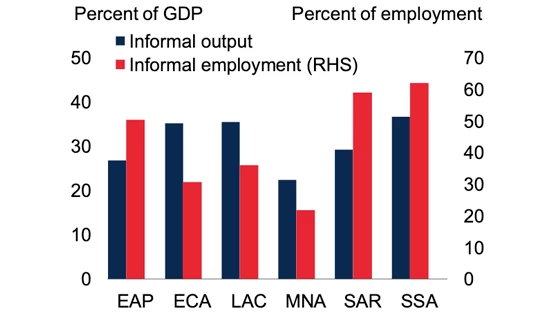
Informal workers are often poorly paid and have limited access to social benefits, making them particularly vulnerable
Informal workers on average have incomes 19% lower than formal workers and have limited savings. In the one-third of EMDEs with the most pervasive informality, unemployment benefits, on average, are only available to less than 2.5% of the population.
Social insurance and informality
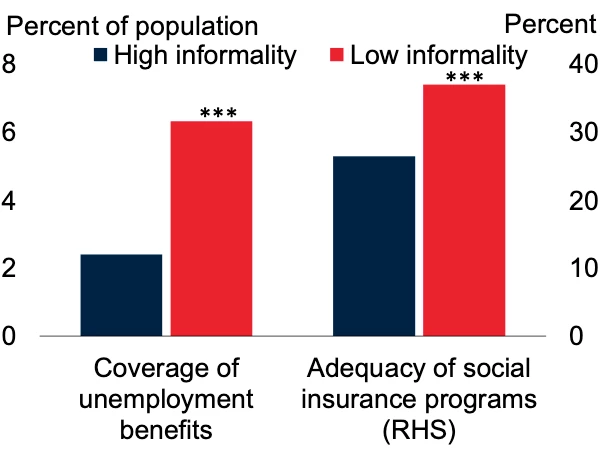
The health consequences of the pandemic are expected to be more adverse in EMDEs with more pervasive informality
Pervasive informality is associated with limited access to medical resources, as well as sanitation and hygiene facilities. Informal output averaged 46% of GDP during 2000-16 in EMDEs with the most pervasive informality, which is twice the size of informal output in EMDEs with the least informality. In EMDEs with the most pervasive informality, sanitation facilities are accessible to only 34% of the population, compared to 80% in EMDEs where informality is least pervasive. Hand-washing facilities are available for only 40% of the population in the former group. Access to medical care is also extremely limited, with only three-fifths the number of doctors and nurses per 1,000 people than in EMDEs with the least informality.
Access to medical resources and sanitation and hygiene facilities
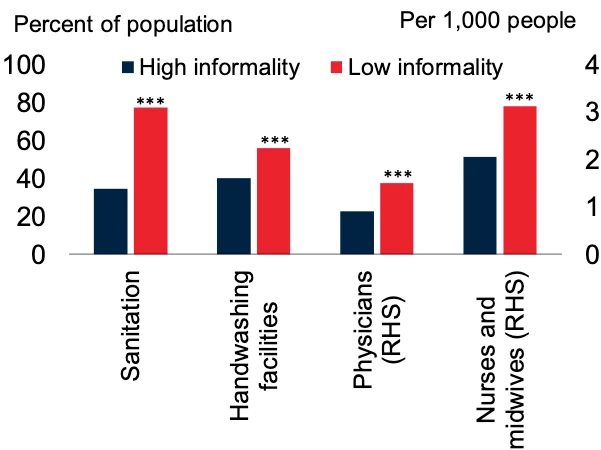
Control measures, while necessary, could hit informal market participants especially hard
Lockdowns hit informal market participants especially hard in sectors where informal firms and employment are common. In EMDE service sectors, about 72% of firms are informal, compared with 33% in manufacturing sectors (Amin, Ohnsorge, and Okou 2019). The agricultural sector has the highest level of informal employment—estimated at more than 90% (ILO 2018). Epidemic-control measures have already disrupted access to markets and inputs of smallholder farmers (FAO 2020).
Informality in manufacturing and services
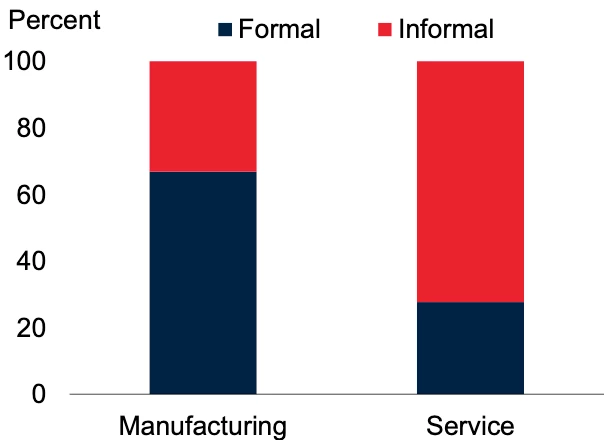
Countries with pervasive informality are less likely to have the institutional and fiscal capacity to mount an effective response to the pandemic.
Government revenues and expenditures in EMDEs with informal output accounting for about 45% of GDP average 5-10 percentage points of GDP below those where less than a quarter of GDP is in the informal sector (World Bank 2019). In addition, governments tend to be less effective, and corruption tends to be more rampant in countries with more pervasive informality, resulting in less effective utilization of public resources (Loayza, Oviedo, and Servén 2006).
Informality and fiscal indicators
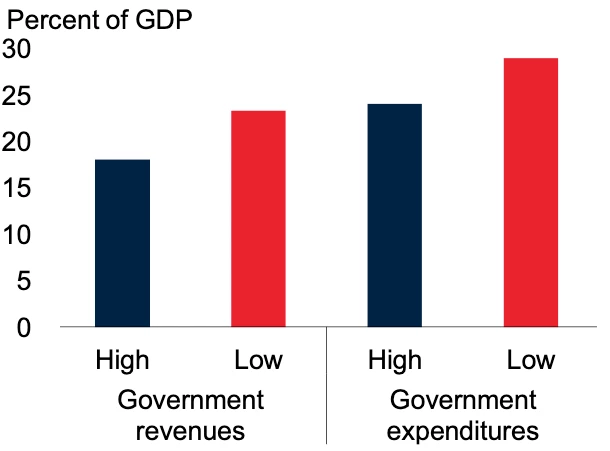
1 [Emerging market and developing economies (EMDEs) include all those that are not classified as advanced economies and for which a forecast is published for this report. Dependent territories are excluded. Advanced economies include Australia; Austria; Belgium; Canada; Cyprus; the Czech Republic; Denmark; Estonia; Finland; France; Germany; Greece; Hong Kong SAR, China; Iceland; Ireland; Israel; Italy; Japan; the Republic of Korea; Latvia; Lithuania; Luxembourg; Malta; Netherlands; New Zealand; Norway; Portugal; Singapore; the Slovak Republic; Slovenia; Spain; Sweden; Switzerland; the United Kingdom; and the United States.]


Join the Conversation